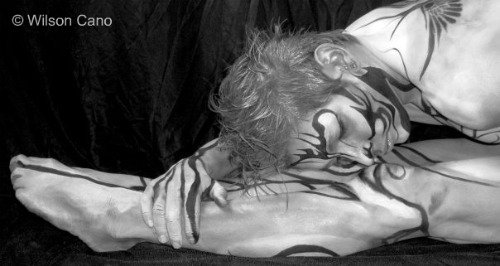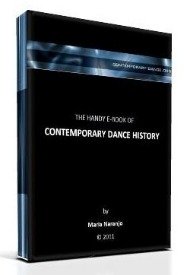MOVEMENT DRAMATURGY
Movement dramaturgy is the art of dramatic composition for dance. The term drama comes from a Greek word that means ‘action’ and it can be used to talk about dance as much as about theater. This is because dancer’s gestures can be understood as actions too.
However, the word dramaturgy is used in several ways and for this reason it may create confusions. When talking about narrative pieces, the word dramaturgy may refer to the story, its written text or just the storyline that ties up the piece from the beginning to the end. Some people use the word to talk about theatrical styles and writing or staging methods. Here, we'll understand dramaturgy as the global and basic structure that gives a dance piece its shape.
Dramaturgy gives the dance or the performance a structure. That’s why we talk about dramatic structures when observing how a dance piece is organized (for example in three parts, or in a progressive way, etc…).
For the case of a complete scenic dance piece, the dramatic structure can consist of its ‘tale’ or the way in which its parts, scenes or moments are organized and evolve. When referring to an abstract choreographic fragment, movement dramaturgy is the way in which intensities, parts or phrasing are displayed.
Every contemporary dance piece has a dramatic structure, no matter how the choreographer proceeds (whether he is conscious or not of it or whether it is fixed for each performance or not).
For the case of contemporary dance, we could say that there are some main ways to understand its movement dramaturgy:
1. Reflecting its association with theater.
2. Reflecting its affiliation to music.
3. Reflecting its relationship to visual arts (which will be treated in another page).
Theater dramaturges use the word dramaturgy when composing (or writing, if you prefer to call it like that). Musicians usually refer to it as structure. I’ll propose here that we talk about dramatic structures for dance, as this expression seems to blend the two concepts in the way dance actually does.

1. Theatrical dramatic structures:
They are mainly narrative, which means that they tell a story or transmit a logical (i.e. verbal) message. When dance carries this kind of content, we can observe its movement dramaturgy in the argument or development of the ‘tale’.
There are some common narrative-choreographic dramatic structures:
-Classical: introduction, development, climax, ending (example: “Swan Lake”).
-Circular: the story begins with the end, develops and finishes as it started.
-Inverted: the story begins with the end and develops progressively to the beginning.
-Flat: there’s no changing in the intensity of actions or no conflict. Just something happening (example: Samuel Beckett’s “Waiting for Godot”).
-Suspended: the story climbs fast to a dramatic climax, turns down a bit to climb again, and does this over and over (example t.v.’s soap operas).
-Fragmented: the parts of the story are displayed in disorder.
2. Musical dramatic structures:
They are abstract. This means that there is not a story to read or understand but a display of pure aesthetical values like movement shape and quality, spatial distribution and so on.
Some common musical-choreographic structures:
-Part A plus contrasting part B.
-Part A, contrasting part B, return to part A.
-Introduction, part A, part B, transition, part A’, part B’, ending (example pop songs).
-Suite: parts A, B, C, D, E, F. Each part has a different rhythm and character.
-Theme and variations: part A, A’, A’’, A’’’, etc.
- Constant progression: one unique fragment that climbs in intensity from the beginning to the end (example Maurice Ravel’s “Bolero”).
-Fragmented and unpredictable: several parts in different orders for each performance (example Merce Cunningham’s pieces).
Of course, those are some examples, and there’s no limit in creating new or innovative movement dramaturgy. Not only can the structure itself vary, but the source of it is endless.
My last piece for example, took its dramatic structure from a ‘tasting menu’. A professional chef designed a gastronomic experience that consists of eight dishes. Each one of them has its own taste, color, temperature, rhythm, dynamic and other aesthetic associations. Well, my dance piece called “El Menú” (The Menu in Spanish) has a kind of suite structure with eight different scenes and a climax on the fifth (the strong dish: meat…):


If you want to learn more, you can read the analysis of the choreographic structure of one of the pieces by Pina Bausch here:
Choreographic structure of "Dance of the Blessed Spirits" by Pina Bausch.
So, if you like composing dance, remember that movement dramaturgy is like the skeleton of your pieces. You better be aware of its shape… you are the choreographer, aren´t you?
Return from Movement Dramaturgy to Choreography
Return from Movement Dramaturgy to Contemporary Dance Home Page
The handy e-book of CONTEMPORARY DANCE HISTORY:
The Dance Thinker is our occasional E-zine. Fill in the form below to receive it for free and join us.
Read:
"The Dance Thinker"
BACK ISSUES
Post contemporary dance announcements (workshops, auditions, performances, meetings and important news... it is free.)



